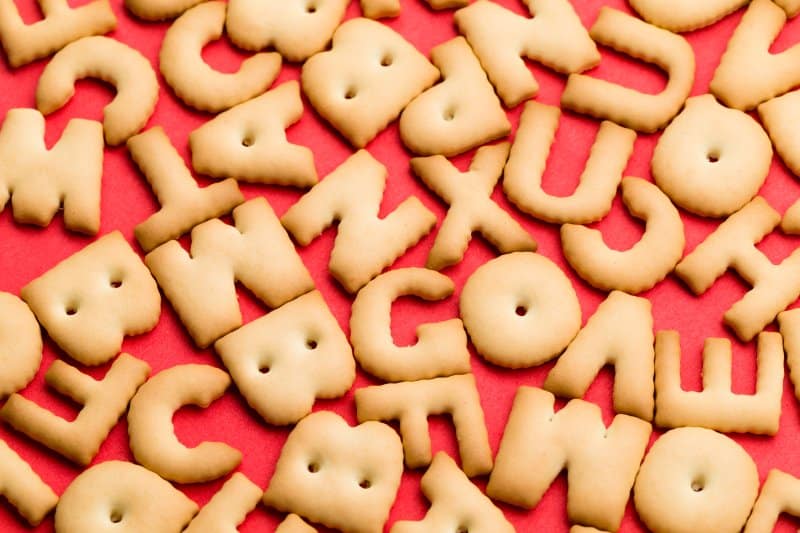The 1980s was a decade of big hair, big shoulders, and big musical events. MTV and cable television were transforming the cultural landscape, bringing people together in ways that had never before been possible. On July 13, 1985, two concerts were held simultaneously in London and Philadelphia which were broadcast live around the world. Promoted as “Live Aid,” the one-day event raised nearly 175 million dollars for famine relief, and it is estimated that up to forty percent of the world’s population tuned in to watch. Nothing like it has happened since.
Among the acts performing before sold-out crowds at Wembley Stadium were Elton John, David Bowie, U2, and Queen. At John F. Kennedy Stadium, The Beach Boys, Santana, Led Zeppelin, Madonna, and Run-D.M.C. provided the entertainment. Of course, not every pop, rock, and hip-hop group took center stage that day. Notably absent were the likes of Michael Jackson, Bruce Springsteen, and the Beastie Boys.
Also missing from the bill was a New Wave band called Missing Persons whose hit song “Words” inquired with big-haired foreboding: “What are words for when no one listens anymore?” The question seemed apt at a time when the music scene dominated conversations, and it’s still relevant in an age when virtual communication has become habitual and texting has all but replaced the spoken word.
So, what are words for exactly?
Textbooks as Teachers
Back in the day, grammar school students were issued textbooks at the beginning of the school year. These books were typically handed down by the previous year’s students who often drew cartoons or otherwise defaced the pages with scripted messages such as “Lisa Loves Tony.” At home, each book was custom-covered in brown paper shopping bags and each subject name was hand-printed on the covers in capital letters: HISTORY, MATH, SCIENCE. The books would remain in the student’s possession until the end of the school year when they would be returned and inventoried for the following year’s class. By mid-June, Lisa and Tony were no longer an item, so the textbooks were reissued with those declarations of love crossed out in permanent ink.
I really enjoyed going to school. I liked learning new lessons and I appreciated the predictability of a curriculum. Each weekday was planned around specific subjects that were taught at specific times on specific days. The daily syllabus allowed time for activities outside the classroom too, such as lunch (homemade by mom), recess (schoolyard games), and free periods that, for me, were often spent in the library. The school library represented a world of imagination, exploration, and escape. Its shelving, lined with thousands of books, introduced me to authors like Twain, Hemingway, and Thoreau, and took me on adventures down the Mississippi, along the Gulf Stream, and around Walden Pond. Books also brought nuance and meaning to familiar subjects like food, sports, and dogs. Especially dogs.
It was in my high school library that I first realized how dog books connect so many diverse subjects. A really good dog book examines human civilizations, global history, climate and weather, geopolitics, art, science, commerce, agriculture, animal husbandry, and popular culture. The text of a truly great dog book brings these topics to life through words that speak to unique intersections of time and space, where every breed of dog represents people, places, and problems solved in partnership with canis lupus familiaris. Through books, I discovered how dogs have always arranged a useful role for themselves wherever people have had a need. From the Arctic Circle to the Sahara Desert and the Andes Mountains, stories of the purebred dog’s helpfulness have been passed down through tales of tragedy and triumph published in journals and letters that await discovery by the next class of students.
A really good dog book examines human civilizations, global history, climate and weather, geopolitics, art, science, commerce, agriculture, animal husbandry, and popular culture. The text of a truly great dog book brings these topics to life through words that speak to unique intersections of time and space, where every breed of dog represents people, places, and problems solved in partnership with canis lupus familiaris.
Encyclopedic Entries
Sitting on the shelves of my school’s library was the Encyclopædia Britannica, which included references to nearly every recognized breed of dog. I hadn’t yet discovered the American Kennel Club’s official publication, The Complete Dog Book, so I remained content with the information provided by Britannica’s 15th edition. It was there that I was introduced to the Russian Wolfhound (Borzoi) and the Japanese Spaniel (Chin).
Eventually, I purchased the Golden Anniversary Edition of the AKC book to learn more about breed terminology and the difference between an Australian Terrier and an Australian Cattle Dog. (At the time, the AKC fully recognized only 126 breeds and the Miscellaneous Class included a mere eight purebreds; all but one of which has full recognition today.) That book provided the kind of detailed information about each breed that Britannica could not.
As its introduction states, The Complete Dog Book was originally intended to make purebred dogs more available to the general public so that individuals might “become better acquainted with the qualifications and appearance of each breed.” It can be hard to comprehend in today’s digital age, but if a person wanted to learn about dogs in the 1980s the only options were to go to a library (or bookseller) or attend a dog show where exhibitors distributed business cards and made time to speak with throngs of curiosity seekers.
In either case, it was through words (printed or spoken) that purebred dogs were promoted and connections made between breeder and buyer. Typically, getting a new dog book was followed up by a trip to a dog show to meet the breeds, and conversely, an excursion to a dog show usually prompted the purchase of a book titled, How to Raise and Train an Australian Kelpie—or whichever breed had been newly discovered.
In the 1980s, individual breeds were celebrated by both the AKC and John Q. Public without apology. Breed information filled the pages of encyclopedias just as breed books lined the shelves of most public and private libraries. Although Obedience Trials and Field Trials were certainly organized back then, the vast majority of published information about purebred dogs focused on the conformation of individual breeds.
Every newspaper in America reported on the local dog show through color commentary on the event and details about the Best in Show and Group winners. Those papers also printed a Classified Section where breeders took out ads which often read: “Puppies Available, AKC, 8 Weeks, M&F, Shots & Wormed, call 715-555-1212 after 6PM.” A telephone call was the only way to find a breeder, and in my case, that call introduced me to a fascinating world that still supports my passion for purebreds.
Standard Bearers
It was through The Complete Dog Book that I first became aware of Breed Standards. As a devoted student of dogs, I read every Standard in my hard cover copy many times. Some of the words and phrases were confusing at first, though the book’s glossary clarified terms such as “hackney,” “haw,” and “hock.” Some words, I quickly discovered, are used with consistency throughout all Standards, whereas others are exclusive to individual breeds.
I discovered “bat ears,” “spectacles,” and “English Saddle” are unique to the French Bulldog, Keeshond, and Poodle respectively. I also came to learn that Standards can have different formats and may be as lengthy or as brief as a parent club deems necessary. Even today, when the majority of AKC Breed Standards are similarly configured, I’m intrigued that a breed can be defined by fewer than 200 words (Greyhound) or in excess of 2,000 words (English Springer Spaniel).
One of the fundamentals that I appreciate about the breeding and exhibition of purebred dogs is the inherent respect that is given to the Breed Standards. In a world that increasingly drinks from the same coffee cup and shops on the same e-commerce website, the Standards provide reassurance that there are still places in this world where individuality can be celebrated. The unique vocabulary that’s utilized at a dog show extols a partnership that has existed in specific forms to serve specialized needs for millennia—as hunters, protectors, herders, guardians, draft animals, companions, and increasingly, as service dogs.
For example, Golden Retrievers have assisted the visually impaired for decades now owing to their “eager, alert and self-confident” personalities. The qualities that are defined by many Breed Standards are being utilized today to provide emotional support to comfort individuals on a daily basis as well as groups of people affected by a catastrophic need.
The lexicon of purebred dogs is perhaps most notable for the “hallmarks” that are described through language that can be poetic, humorous, or downright defiant. The idiom, “eyes gazing into the distance as if in memory of ages past” is exclusive to the Afghan Hound, and once experienced cannot be forgotten. To read that the Irish Terrier is “blind to all consequences” is to know this redheaded daredevil, and to learn that the Dogue de Bordeaux has a “high stimulus threshold” is to avoid any confusion about the true nature of this sweet, sensitive, and stubborn Bordelais.
So useful are specific words that their association with a breed is clear no matter the language. After all, a Pekingese is “lionlike” wherever he deigns to make an appearance. (That lionesque sobriquet communicates a kind of universal meaning.) When written, words have a permanence and a singular purpose. Spoken, they can be as fleeting as the wind—unless they are heard by someone who is eager to learn.
The Eighties may over, but the decade’s legacy of excess is not forgotten. Just as music lovers exalt the pivotal moment in time that was Live Aid, purebred dog fanciers recognize the significance of the AKC Centennial Dog Show and Obedience Trial, also held in Philadelphia. This two-day event, which took place on November 17 & 18, 1984, brought together 8,075 dogs (8,214 entries) of 141 Breeds and Varieties in a once-in-a-lifetime event that even the most emblematic of words fail to adequately describe. Iconic. Phenomenal. Quintessential. Those who attended surely have a vocabulary of their own to describe the experience of having been there. Their experiences, then and now, are best expressed in their own words and shared with anyone who will listen.









